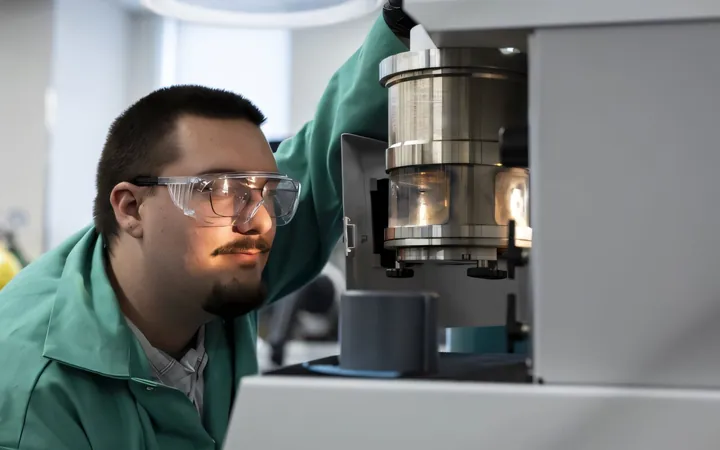
Revolutionary Rocket Fuel: Chemists Unveil Game-Changing Compound for Space Travel
2025-08-27
Author: Chun
A Breakthrough in Rocket Propulsion
In an exciting development for aerospace engineering, chemists from the University at Albany have unveiled a groundbreaking high-energy compound that promises to transform rocket fuel forever. This innovative compound, known as manganese diboride (MnB2), boasts an energy output that surpasses traditional fuels, enabling more efficient space missions.
Maximizing Space and Efficiency
The implications of this discovery are astounding. According to Assistant Professor of Chemistry Michael Yeung, every square inch on a rocket is precious real estate. The energy density of manganese diboride is over 20% higher by weight and 150% by volume compared to aluminum—the current standard in solid rocket boosters. This means less fuel will be needed for substantial voyages, allowing for additional critical supplies and equipment to be carried.
Safety Meets Performance
Not only is manganese diboride highly energetic, but it also prioritizes safety. The compound will only ignite in the presence of an ignition agent like kerosene, minimizing risks during transport and storage.
Paving the Way for Future Innovations
The potential applications of manganese diboride go beyond rocket fuel. Research in the Yeung lab indicates that its unique boron-based structure could lead to enhanced catalytic converters for vehicles and new strategies for breaking down plastics, addressing both environmental concerns and fuel efficiency.
A Journey Through Scientific Discovery
The synthesis of manganese diboride requires extreme conditions facilitated by an arc melter—a tool that achieves scorching temperatures over 3,000°C. This high heat allows manganese and boron powders to meld into the groundbreaking compound.
Decoding the Mystery of Energy Storage
Understanding why manganese diboride is so powerful required innovative thinking. UAlbany Ph.D. student Gregory John worked alongside computational chemist Alan Chen to model its molecular structure. They discovered that a slight distortion, or "deformation," in the compound allows it to store energy efficiently. This can be visualized like a taut trampoline, storing energy until unleashed upon ignition.
The Future is Bright for Boron Compounds
With the scientific community increasingly recognizing the potential of boron-based compounds, the pursuit of new materials is in full swing. Yeung’s ongoing research reflects this quest for stronger, more effective compounds—not just for rocket fuel, but across various applications in materials chemistry.
From Inspiration to Innovation
Yeung’s fascination with boron compounds began during his graduate studies at UCLA, where he aimed to create materials harder than diamond. His unexpected encounter with the orange glow of a manganese diboride compound was a defining moment, solidifying his commitment to exploring the energetic properties of boron. What began as a curiosity has now taken shape into a promising pathway for advances in aerospace and environmental technology.





 Brasil (PT)
Brasil (PT)
 Canada (EN)
Canada (EN)
 Chile (ES)
Chile (ES)
 Česko (CS)
Česko (CS)
 대한민국 (KO)
대한민국 (KO)
 España (ES)
España (ES)
 France (FR)
France (FR)
 Hong Kong (EN)
Hong Kong (EN)
 Italia (IT)
Italia (IT)
 日本 (JA)
日本 (JA)
 Magyarország (HU)
Magyarország (HU)
 Norge (NO)
Norge (NO)
 Polska (PL)
Polska (PL)
 Schweiz (DE)
Schweiz (DE)
 Singapore (EN)
Singapore (EN)
 Sverige (SV)
Sverige (SV)
 Suomi (FI)
Suomi (FI)
 Türkiye (TR)
Türkiye (TR)
 الإمارات العربية المتحدة (AR)
الإمارات العربية المتحدة (AR)